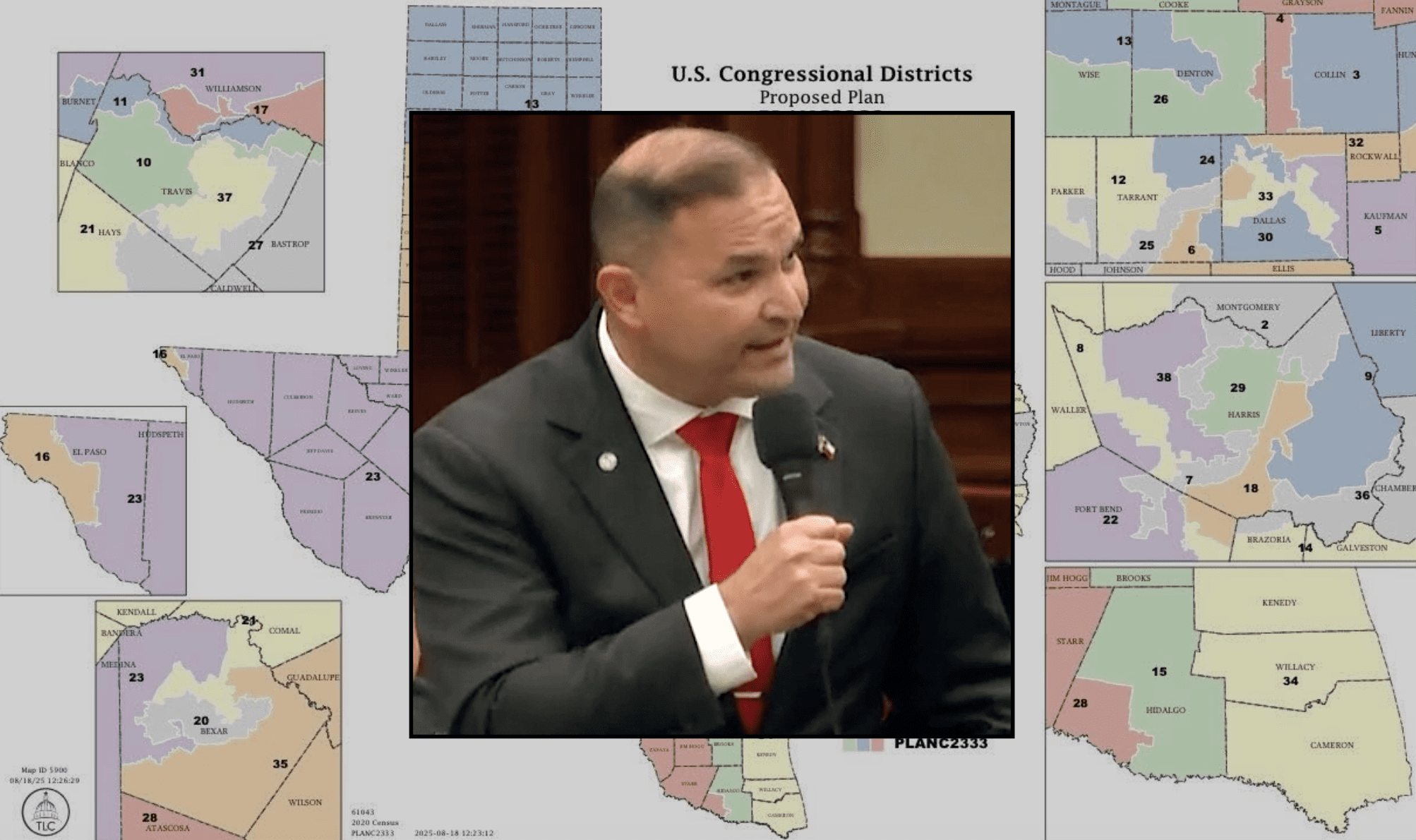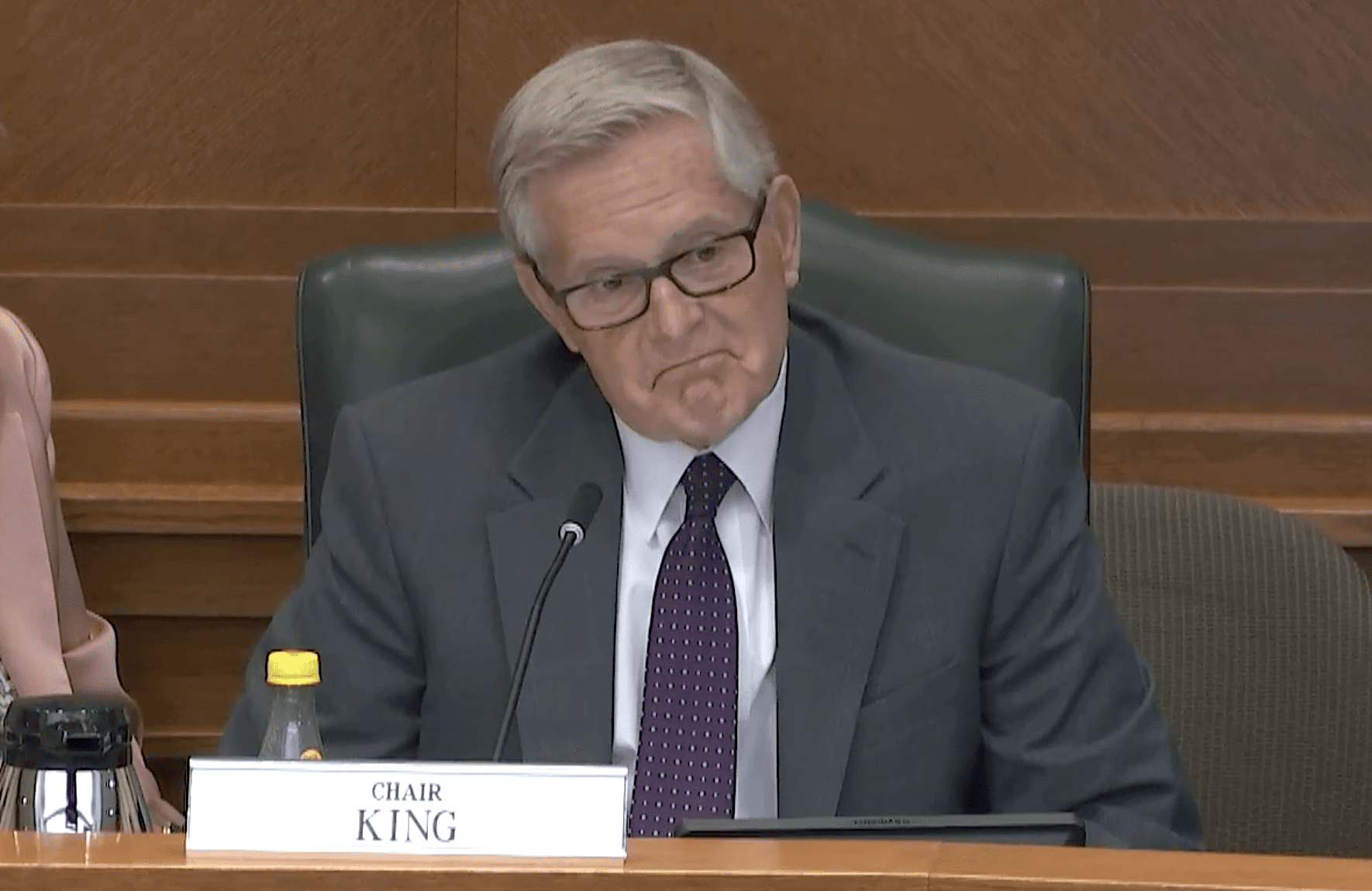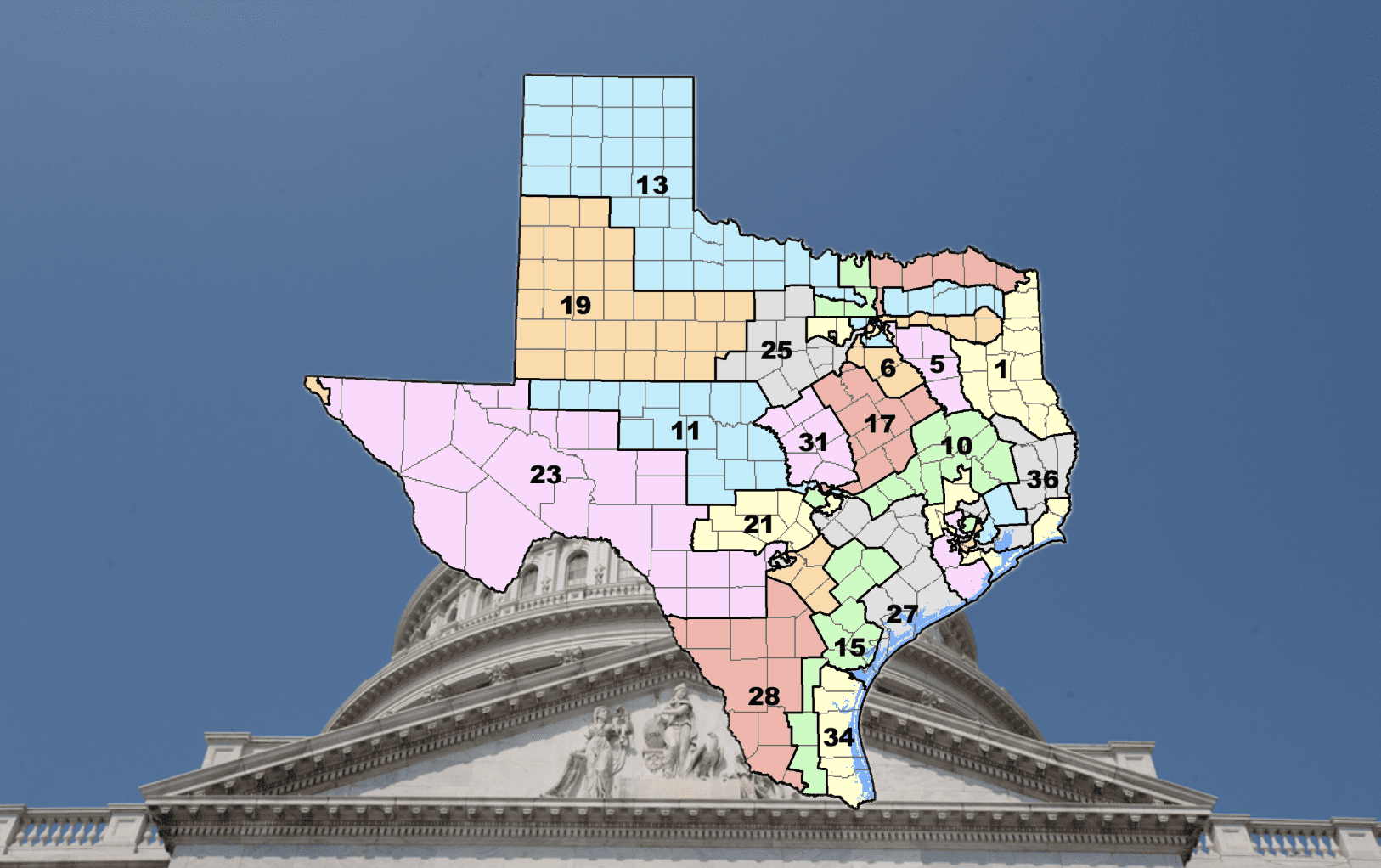A Republican plan to redraw Texas congressional districts ahead of the 2026 midterm elections is on its way to the governor’s desk after passing the Senate early Saturday morning, paving the way for a shake-up in the state’s U.S. House delegation.
Senators passed the congressional redistricting plan on a party-line, 18-11 vote, following hours of debate and a threatened filibuster that fizzled.
The new map, drawn to improve Republican political performance, adds five new GOP-opportunity seats.
State Sen. Phil King (R–Weatherford) sponsored the redistricting plan, House Bill 4 by State Rep. Todd Hunter (R–Corpus Christi), which the House passed on Wednesday.
“The area of redistricting law is very robust and gets very complex, very quickly,” King opened Friday morning. “We’re not in a courtroom today.”
Yet throughout the day, Democrats pressed King on specific redistricting legalities and made clear they intend to challenge the map in court.
King said HB 4 is “legal under all applicable law” and meets the requirements of “one person, one vote” and compactness.
He repeatedly emphasized that the map was drawn based on partisan political performance, which the U.S. Supreme Court has ruled is permissible, not racial data.
“In contrast to the complications that are involved with race-based redistricting, political performance is really a pretty easy map to draw, and it’s absolutely permissible as a basis for drawing electoral districts,” said King.
The map flips five congressional districts from Democrat- to Republican-leaning: CD9 in Houston, CD28 in the Rio Grande Valley, CD32 in Dallas, CD34 in coastal South Texas, and CD35 in San Antonio.
King said those districts will be “competitive,” not guaranteed wins for Republicans.
Compared to a previous plan, the approved map moves Fort Bliss from CD23 into CD16 in the El Paso area, recombines Navarro County into CD6, and moves Liberty County from CD36 into CD9.
Senate Democrats quizzed King about the racial impacts of the redistricting plan and whether it complies with the Voting Rights Act.
“I haven’t examined racial data because I thought that was an inappropriate way to approach the redistricting process,” King responded, adding that the mapmakers assured him that the plan is fully compliant with the law.
Several Democrat senators complained that “economic drivers” such as airports and factories are now in different districts.
“Buildings don’t vote. People vote,” said King. “Voters don’t live at airports. Voters don’t live in a factory, they don’t live at a petroleum plant.”
Democrats also argued that comments submitted online and from people who participated in multiple public hearings overwhelmingly opposed the plan.
“There’s no question Democrats are not in favor of this map… because it elects more Republicans,” said King. “It was also very clear from testimony that a lot of people want us to create maps that reflect specific percentages of ethnic groups, and that’s illegal. We can’t do that.”
State Sen. Adam Hinojosa (R–Corpus Christi), the first Republican to hold Senate District 27 since Reconstruction, said the new map—which increases majority-minority voting districts—gives South Texas Hispanics “a voice that reflects their values, not outdated assumptions about race or party.”
“This is not a racial shift. This is a values shift, and no amount of shouting racism is going to change that,” said Hinojosa.
We have all seen the political shift in South Texas over the past several years. It came to a head this last election. I won my seat. President Trump won counties all along the southern border that had not voted Republican in generations, if ever. President Trump won with 55 percent of the Latino vote, and doubled his support among black voters from where it was in 2020.
So let’s stop pretending that this is all about race. It is about values. It’s about representation. Real representation. The fact that we’re redrawing the maps is to ensure that as these shifts have happened and continue to happen, that the people are able to have representation that reflects their values, not their last name, not their skin color.
“If you’re worried about losing minority votes in this next election, stop blaming maps and start looking in the mirror,” concluded Hinojosa.
In closing, King explained why he supported the new map.
“It has nothing to do with race. It has everything to do with good policy,” he said.
“The Biden years were devastating to the United States, but since we’ve had a Republican majority in the U.S. House and the U.S. Senate, and since we’ve had a Republican president, we have seen remarkable changes in America,” said King.
He also noted that despite Democrats’ criticism throughout hearings and during floor debates, they had offered no alternate maps, and no one presented any analysis of data to demonstrate that the map violates any law.
“This map is about continuing good policy. It’s about overcoming gerrymandering in other states. And I think it is self-evident that—because no analysis has been presented through any hearing or on this floor today, no data has been presented to suggest, to show that it is not legal—I think it is self-evident that this map is legal in all respects,” King concluded.
Democrat State Sen. Carol Alvarado of Houston threatened to filibuster the redistricting bill, as she did in 2021 to stall the election reform bill that prompted Texas Democrats’ last quorum bust, but Republicans shut down the plan as a campaign fundraising scheme.
The Republican redistricting plan now goes to Gov. Greg Abbott, who has said he is ready to sign it into law once it reaches his desk.
No ads. No paywalls. No government grants. No corporate masters.
Just real news for real Texans.
Support Texas Scorecard to keep it that way!





